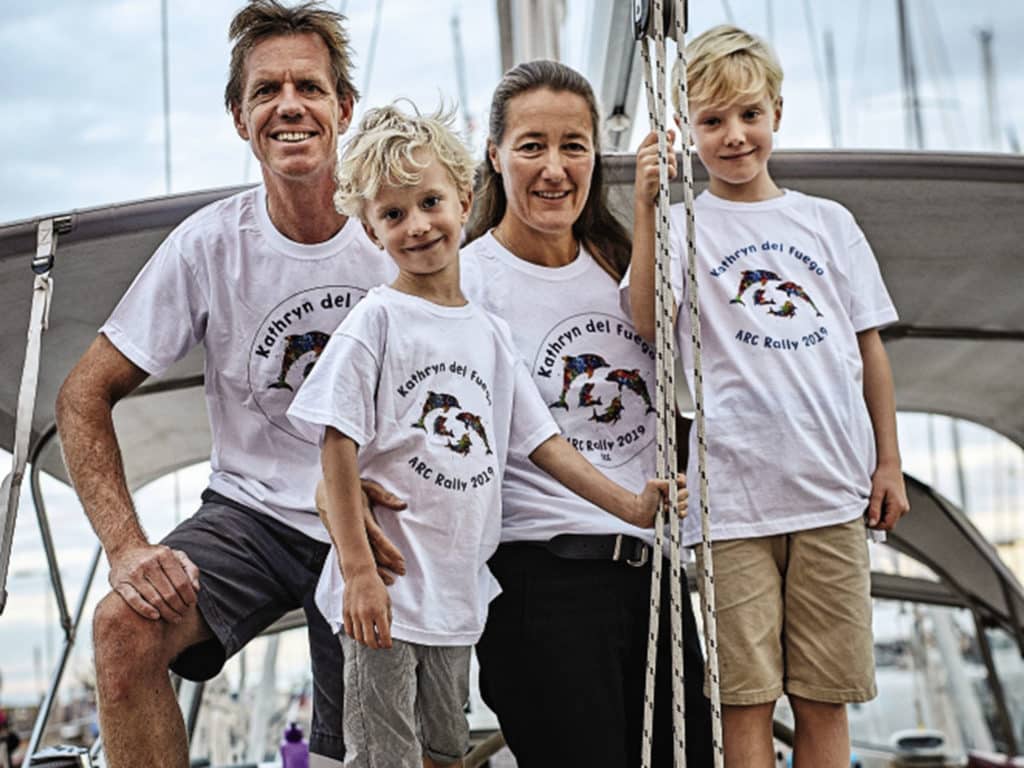
Great! You’re just in time for an arrival,” said Sarah Collins, the communications manager for World Cruising Club’s Atlantic Rally for Cruisers, more commonly known as just the ARC. I was still a little bleary, having arrived in St. Lucia late the night before, but this is what I was here for—to meet some of the crews who just arrived in Rodney Bay after crossing the Atlantic.
I hustled down the long dock (seriously, IGY Rodney Bay Marina is enormous) to find the correct slip. It wasn’t hard—I just needed to look for the gathering of Yellow Shirts, the name given to the team from World Cruising Club that handles all the on-site logistics and, you guessed it, are easily identified by their bright yellow shirts. Along with the team in yellow, the greeting committee included a steel-drum musician, and a pair from St. Lucia tourism who provided each arrival, no matter what time of day or night, with a fresh fruit basket and some rum punch. A warm welcome to the Caribbean indeed. Arriving now was Altair, a Saga 48, from Annapolis, Maryland, one of 22 American boats in the event (Great Britain had the greatest representation at 54). Capt. Joe Reed backed smartly into the slip while his two crew passed lines to waiting Yellow Shirts. In a moment, the engine was shut down, wobbly legs were stretched, rum punches handed out, and congratulatory hugs and handshakes passed around. So how was everyone feeling after the crossing? “Exhausted, and pleased,” Reed said, smiling. And with that, the tired crew went about the business of showers and clearing in, and the welcoming committee moved on to the next arrival.
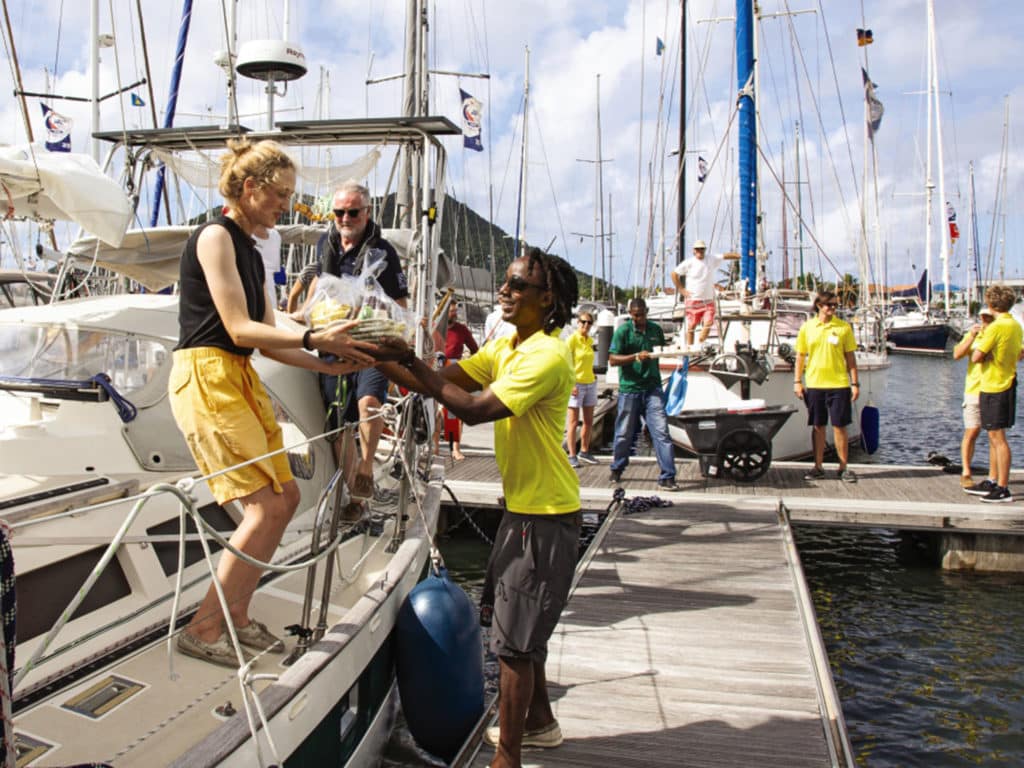
The ARC, which began in 1986, attracts about 200 boats and 1,200 people each year. The route is a classic trade-wind run that departs Las Palmas de Gran Canaria in late November, and ends roughly two and a half to three weeks later in St. Lucia, one of the Caribbean’s Windward Islands. Due to the size of the ARC, and its longevity, I have been intrigued by the event for years, and was eager to learn more about it and what makes it remain so popular after three decades.
As I wandered around the marina and chatted with participants and Yellow Shirts at the on-site ARC headquarters, I quickly learned to let go of any preconceived notion I may have had of what a “rally person” is—this event covers the gamut, and I was blown away by the range of sailors and their boats. In all, the 2019 ARC had 190 entrants—including 40 multihulls—representing 35 countries. The boats ranged in size from a Dufour 34 to the 104-foot superyacht Ulisse. As for the sailors, participants included 42 children and at least one octogenarian, circumnavigators and crews fairly new to sailing, veteran ARC sailors, and first-timers.
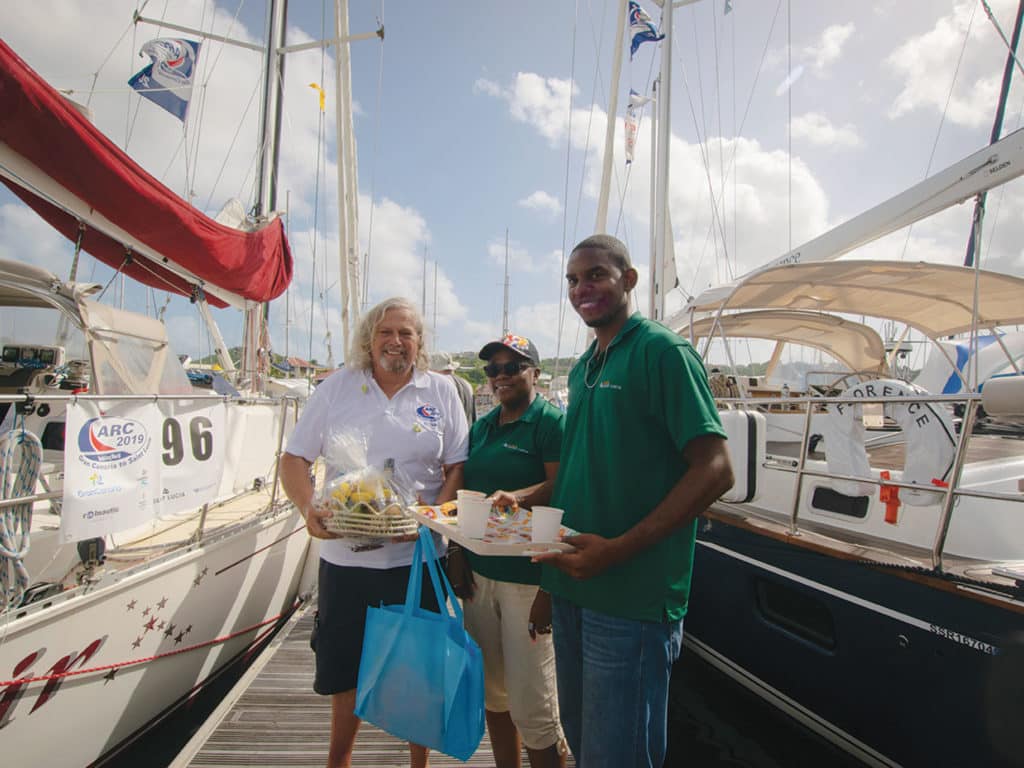
Russell Hall, aboard Kathryn del Fuego, a Hallberg Rassy 46 hailing from the United Kingdom, had completed a trans-Atlantic in his 20s, and was excited to repeat the adventure with his wife, Kathryn, and sons Hugo, 8, and Felix, 6. “I was against [joining the ARC] at first,” he said.
“Yeah, Russell was against it. I wanted to do it,” Kathryn added. “I wanted to do the crossing with other people, and I wanted the kids to meet other kids so they would feel like this was a normal thing to do. And it’s been great.”
Russell agreed: “The main apprehension wasn’t the nearly 3,000 miles of ocean—it’s that we were doing it as a family.”
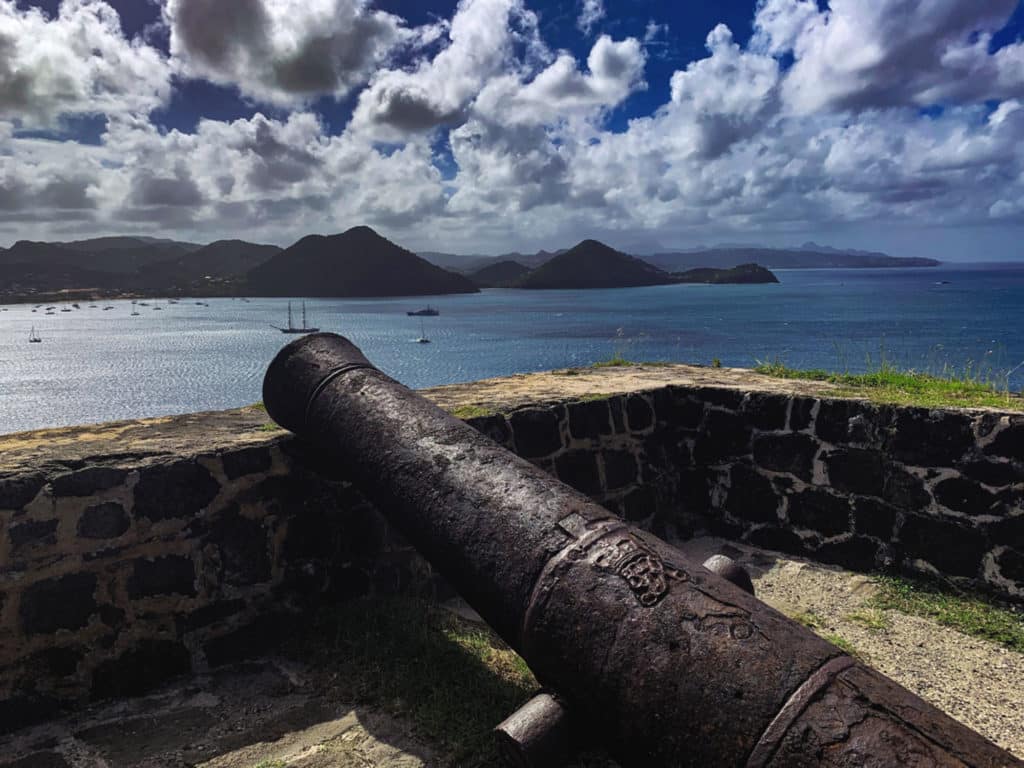
So how was the crossing? “The first week was good—light winds, so it was easy to cook, easy to get into a routine and do a bit of homeschooling,” Kathryn said. “But the second week was really tough. We had two sets of waves, the seas were confused, and there was a 12-foot swell. That week was really, really hard. The kids did well though. They weren’t ill, did arts and crafts every day, had movie nights. It’s nice to have the camaraderie of the ARC—we literally could always see another boat on AIS during the crossing, which was amazing. We didn’t expect that.” With the long voyage under their belt, the Hall family was looking forward to hanging out in the Caribbean for a bit before heading toward Panama and the Pacific.
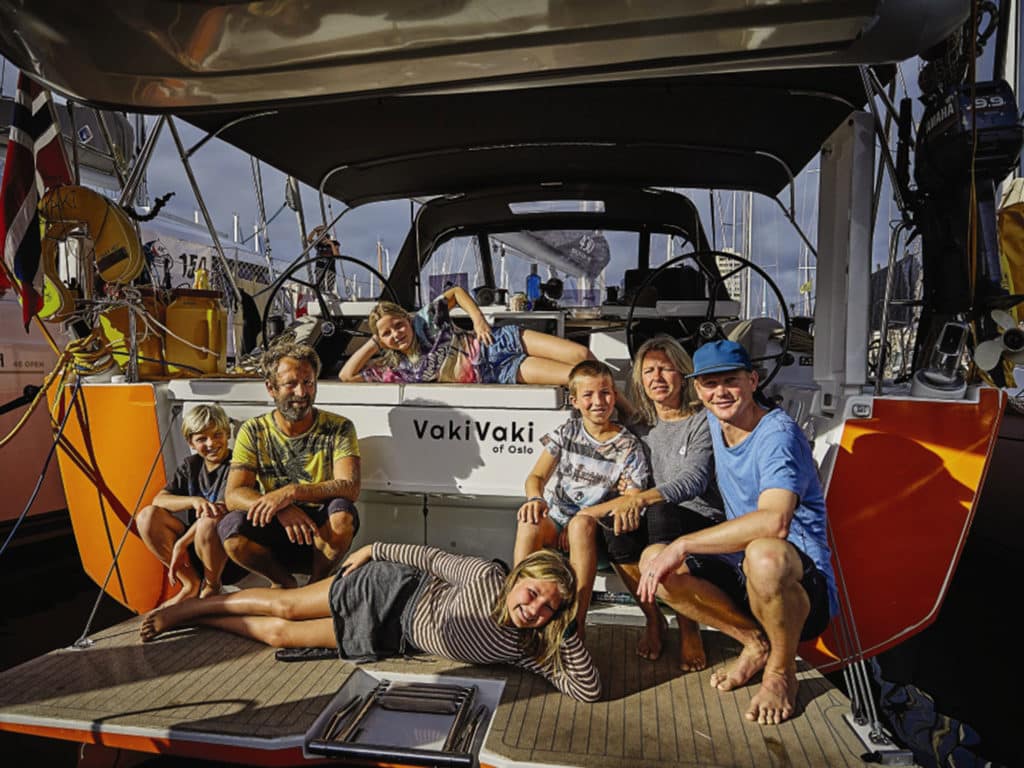
Down the dock from Kathryn del Fuego, I found the Norwegian Dufour 430 VakiVaki, and the crew definitely had an interesting story. Aboard were Thomas Lien and his wife, Susann Nordhagen, and their two kids, along with friend Jo Borkhus and his two kids. “Yeah, it’s definitely a kid boat,” Nordhagen laughed.
Lien, a filmmaker, already had a circumnavigation under his belt, and the whole family had extensive sailing experience in the Pacific as well as around Norway. VakiVaki was a new boat for the family, chosen because “it was the smallest boat that could fit two families,” Lien said. “It has eight beds, and we like the layout.”
“We actually weren’t going to go traveling,” Nordhagen added. “We were planning to bring the boat home to Norway [from Germany]. And then we turned left instead.”
“And here we are!” Lien said.
Although everyone aboard had plenty of experience, it was their first ARC. “Before we thought, The ARC is more for the old and settled—we’re the hippies; we don’t need to do the ARC.” Then Lien laughed and added: “Now we’re old and settled ourselves. We thought it would be fun, mainly for the kids. We didn’t join the ARC so much for the safety reasons, more for the fun.” The family’s extended plans include spending time in the Caribbean, followed by travels north to the US, Canada, Greenland, Iceland and then home to Norway. Lien is planning to film another season of the family’s series, Message in a Bottle, along the way (check out season one on YouTube below).
Buzzing around the docks and the small ARC headquarters office, the team of Yellow Shirts kept everything running smoothly—and there was a lot to juggle. From organizing the daily excursions and activities that crews can sign up for to the evening parties and all the logistics of the constant stream of arriving boats, the team was busy—but clearly enjoying what they do. “In St. Lucia we operate a watch/shift pattern for welcoming arrivals, with no two shifts the same,” Collins said. “Over this time, we get to know the participants and share in their adventure, which is a great buzz and very rewarding. Possibly the most difficult aspect is, in the same way as the fleet, we have to be adaptable to weather conditions, which can present challenges. In 2019, the weather was kind to the fleet, with few breakages or significant problems at sea; however, it meant the fleet all arrived in Rodney Bay at a similar time, so coordinating berthing requirements was a big logistical challenge. Organizing the shoreside program, we are also at the mercy of the weather the boats experience during the crossing. The workdays are long, but we support each other and have a lot of fun along the way too.”
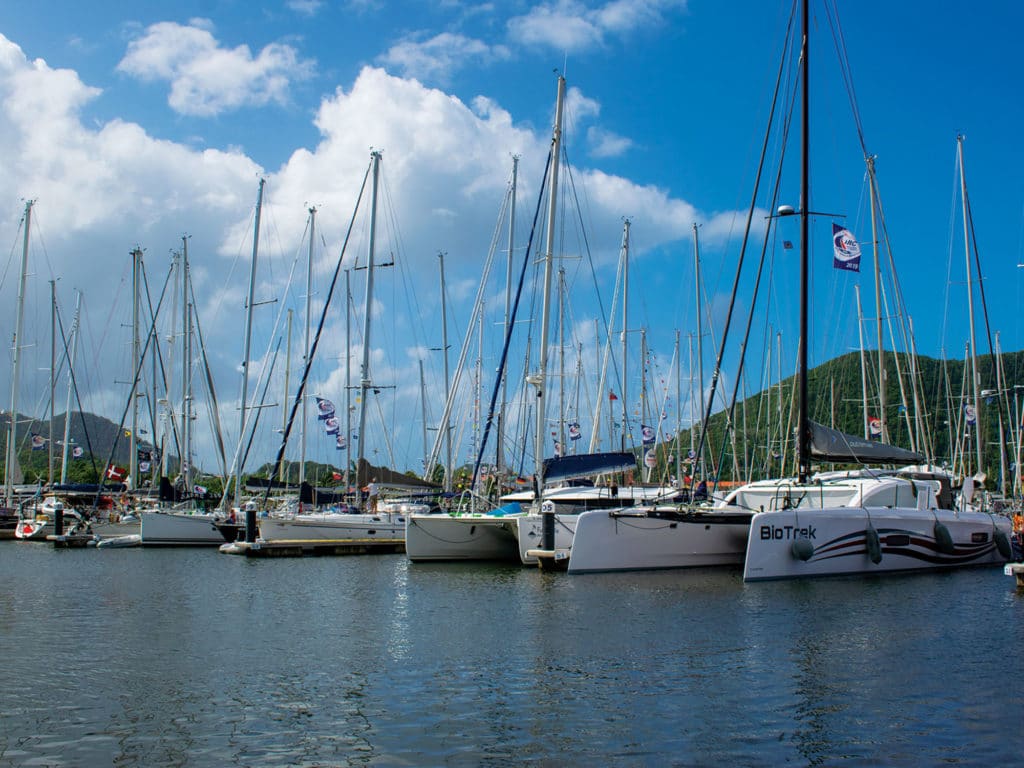
Managing director Andrew Bishop has been at the helm of World Cruising Club since 1999, when founder Jimmy Cornell retired. How has the ARC changed in the 20 years since? “I think it’s become more established, more well-known,” Bishop said. “In the early days, there were more people who were doing it as part of an Atlantic circuit, whereas now we get people who are sailing the ARC because they want to sail across the Atlantic, and it’s not necessarily part of a circuit. They’ll do the crossing and have their boats shipped back. We’ve focused on developing the program around the ARC. Obviously, we can’t be with participants at sea, so the improvements have to come with the program that we deliver at the beginning and the end. It’s a pretty well-oiled event now.”
All over the docks, from the participants to the Yellow Shirts, the word I kept hearing over again was “camaraderie,” and it was plainly visible among everyone I met. “Everyone’s nice, everyone helps out,” Russell Hall noted. “When we were sailing to the start in Las Palmas, and would fly our ARC flag in an anchorage, people would come over to talk about it. Everyone seemed to know what it was, and because you have the flag up, they know you’re going on a long-distance adventure.”
Jennifer Brett is CW’s senior editor.
Note on the 2020 Atlantic Rally for Cruisers: The World Cruising Club is optimistic that the new coronavirus pandemic will have subsided enough by November to allow for the events to happen as planned. Visit worldcruising.com for updates.
Things to Do in St. Lucia
Pigeon Island National Landmark: This park is a quick taxi ride or about a 45-minute walk from Rodney Bay. The hike up the hill to the fort will stretch your legs for sure, and the view at the top is breathtaking. After, enjoy tasty Caribbean fare at the beachside Jambe de Bois restaurant.
Tet Paul Nature Trail: Learn about the flora and fauna of the island from a knowledgeable guide on a hike that takes you to some of the most beautiful views of the iconic Pitons mountains.
Gros Islet Friday Night Fish Fry: Just a 15-minute stroll from Rodney Bay is the little village of Gros Islet. Head there on a Friday night for a real St. Lucian experience.
Sulfur Spring Park: The hottest and most active geothermal area in the Lesser Antilles, this park offers an interesting look at the bubbling crater, and an opportunity for a mud bath in the warm sulfur pools.








